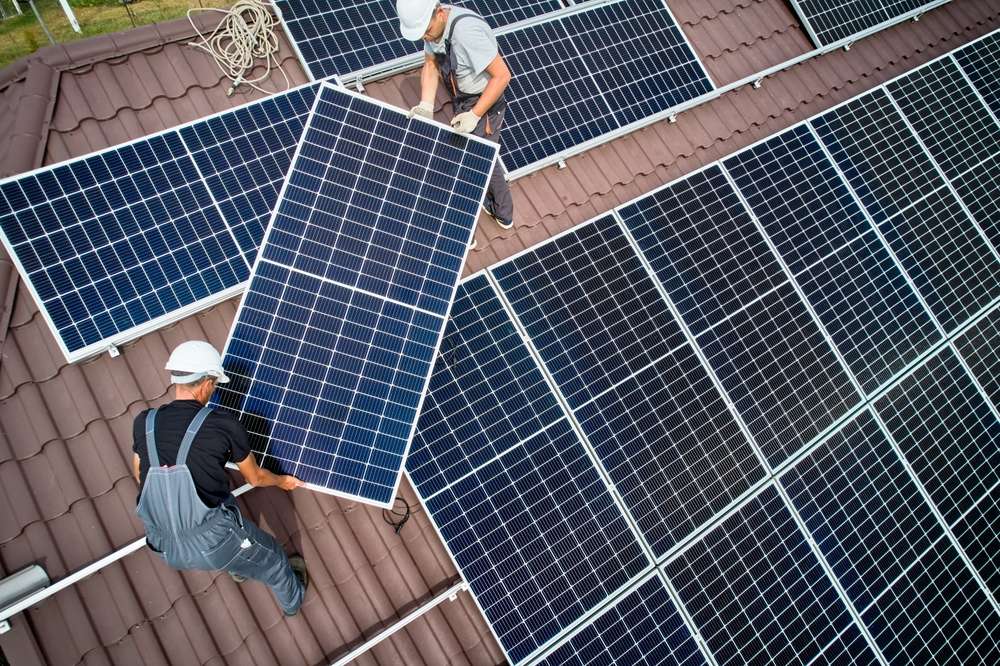Essential Insights on Solar Roof Installation and Costs
Solar roof technology has transformed residential energy solutions, offering homeowners an innovative way to generate clean electricity while maintaining aesthetic appeal. Unlike traditional solar panels mounted on existing roofing materials, solar roofs integrate photovoltaic cells directly into specially designed tiles or shingles that serve as both protective roofing material and energy generators. This dual functionality makes solar roofs an attractive option for new construction projects or complete roof replacements, though the decision requires careful consideration of various factors including installation complexity, long-term benefits, and significant upfront investment costs.

Key Elements to Consider When Evaluating Solar Roof Costs
Understanding the financial aspects of solar roof installation involves analyzing multiple cost components beyond the initial purchase price. Material costs typically represent the largest expense, with solar roof tiles priced significantly higher than conventional roofing materials or traditional solar panel systems. Installation complexity directly impacts labor costs, as solar roof projects require specialized expertise in both roofing and electrical work.
Additional factors affecting overall costs include roof size, architectural complexity, local building codes, and permit requirements. Geographic location influences pricing through varying labor rates, installation incentives, and regional weather considerations that may necessitate specific materials or reinforcement techniques. Homeowners should also account for potential electrical system upgrades, inverter costs, and monitoring equipment when calculating total project expenses.
Federal tax credits, state rebates, and local utility incentives can substantially reduce net costs, making thorough research of available programs essential for accurate financial planning. Energy savings over time contribute to return on investment calculations, with electricity bill reductions potentially offsetting installation costs over the system’s 25-30 year lifespan.
Learn How to Avoid Costly Errors During Installation
Proper planning prevents expensive mistakes that can significantly impact project timelines and budgets. Selecting qualified installers with specific solar roof experience ensures proper integration of electrical and roofing systems. Inadequate structural assessments may lead to costly reinforcement requirements discovered mid-project, making comprehensive roof evaluations essential before beginning installation.
Permit acquisition represents a critical step often underestimated by homeowners. Working with installers familiar with local building codes and inspection requirements prevents delays and potential rework. Incorrect electrical connections or inadequate grounding can create safety hazards and require expensive corrections, emphasizing the importance of certified electrical work.
Weather considerations during installation affect both quality and cost. Scheduling installations during optimal weather conditions reduces risk of water damage and ensures proper adhesion of materials. Rush jobs or installations during inappropriate weather conditions often result in warranty issues and premature system failures requiring costly repairs.
Communication between homeowners and installation teams prevents misunderstandings about project scope, material specifications, and timeline expectations that can lead to change orders and additional expenses.
Discover Strategies for Selecting the Best Solar Roof for Your Home
Choosing appropriate solar roof technology requires evaluating multiple factors specific to individual properties and energy needs. Roof orientation, pitch, and available surface area directly impact energy generation potential. South-facing installations typically provide optimal performance, while east and west orientations may still offer acceptable energy production depending on local conditions.
Aesthetic preferences play significant roles in product selection, with various tile styles, colors, and profiles available to complement different architectural designs. Some solar roof products closely mimic traditional materials like slate or clay tiles, while others feature more contemporary appearances.
Energy requirements analysis helps determine appropriate system sizing and technology selection. Reviewing historical electricity usage patterns and considering future needs such as electric vehicle charging or home additions ensures adequate system capacity. Battery storage integration capabilities vary among different solar roof products, affecting long-term energy independence options.
Warranty terms and manufacturer reputation provide important decision-making criteria. Comprehensive warranties covering both roofing and electrical components offer better long-term protection than separate warranties for different system elements. Researching manufacturer financial stability helps ensure warranty support throughout the system’s operational life.
| Provider | Product Type | Cost Estimation | Key Features |
|---|---|---|---|
| Tesla | Solar Roof Tiles | $21-25 per sq ft | Integrated solar cells, tempered glass, 25-year warranty |
| CertainTeed | Apollo Solar Shingles | $15-18 per sq ft | Traditional shingle appearance, rack-free installation |
| GAF | Timberline Solar | $12-16 per sq ft | Nailable solar shingles, standard roofing tools installation |
| SunTegra | Solar Roof Tiles | $10-14 per sq ft | Lightweight design, multiple color options |
Prices, rates, or cost estimates mentioned in this article are based on the latest available information but may change over time. Independent research is advised before making financial decisions.
The solar roof market continues evolving rapidly, with new products and installation techniques emerging regularly. Staying informed about technological advances and industry developments helps homeowners make educated decisions about timing their investments. Professional consultation with multiple installers provides valuable insights into local market conditions, available incentives, and realistic project timelines.
Solar roof installation represents a significant investment requiring careful consideration of costs, installation quality, and product selection. Thorough research, qualified professional guidance, and realistic financial planning contribute to successful projects that provide decades of clean energy generation and enhanced property value.




